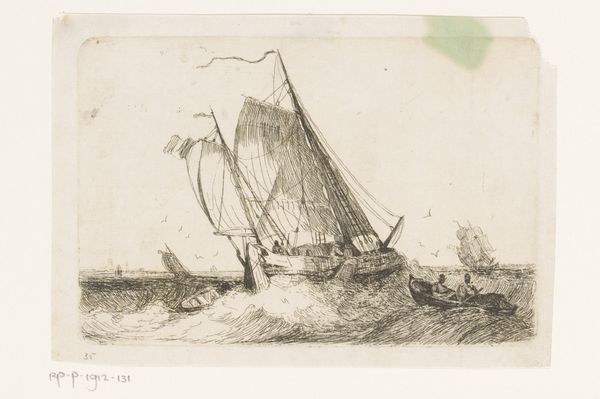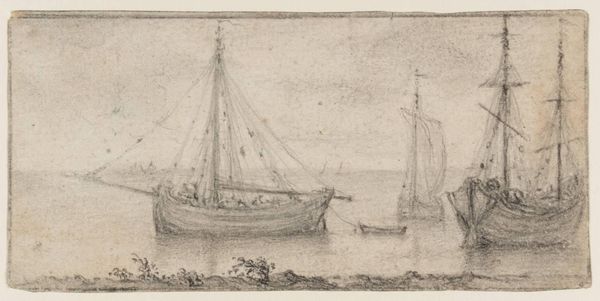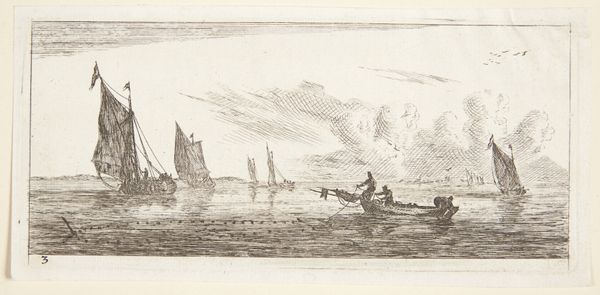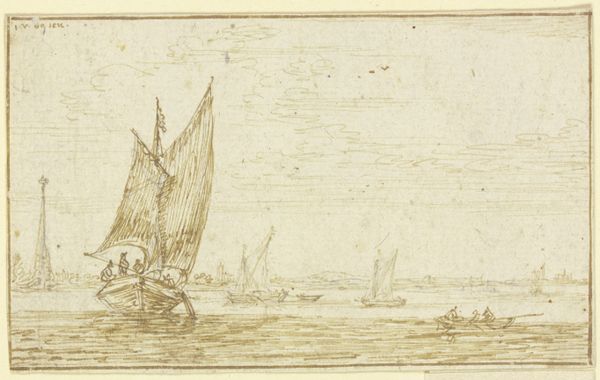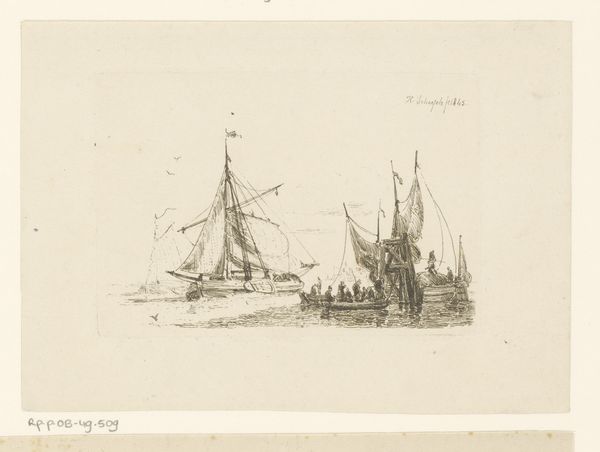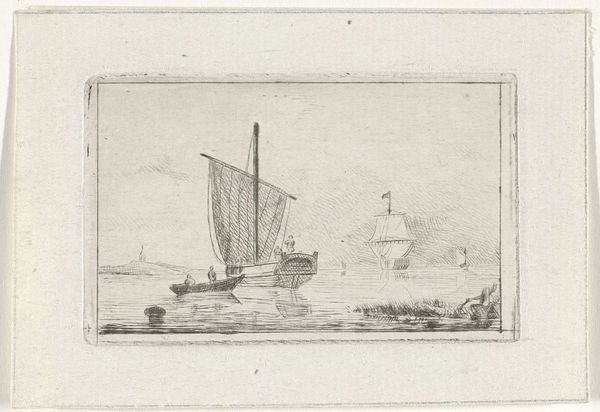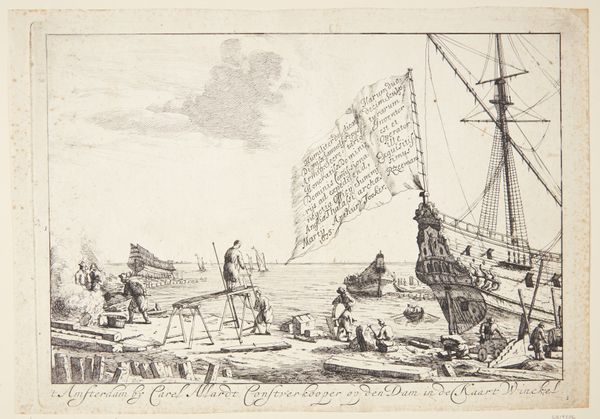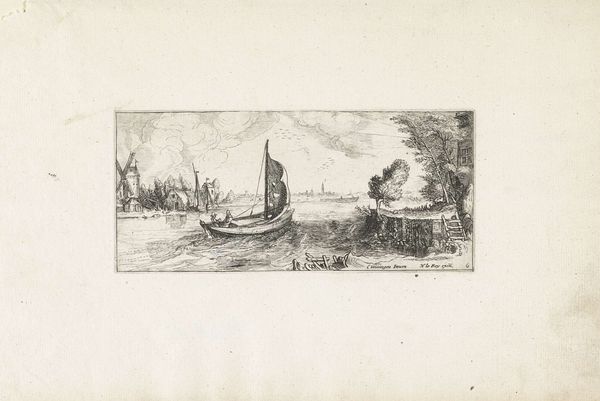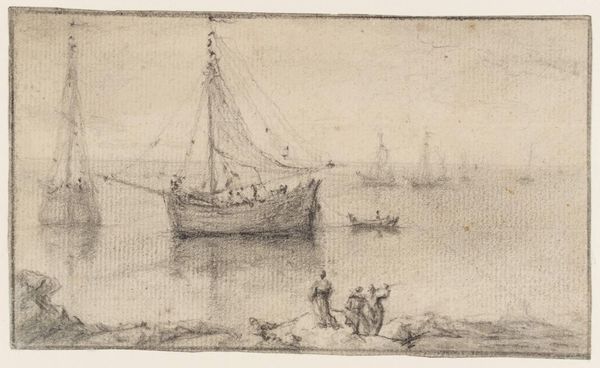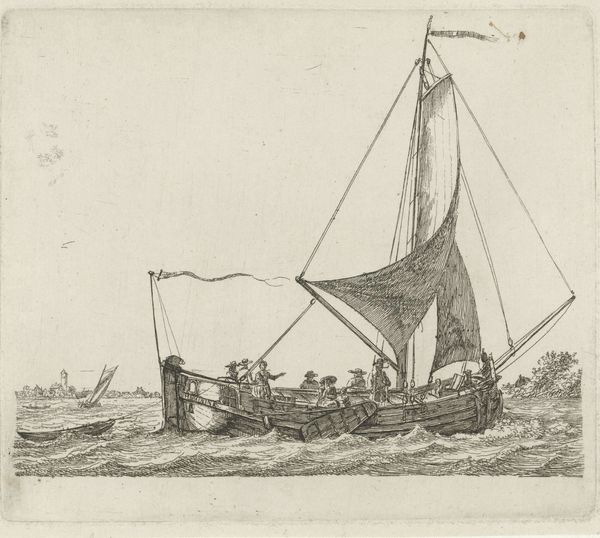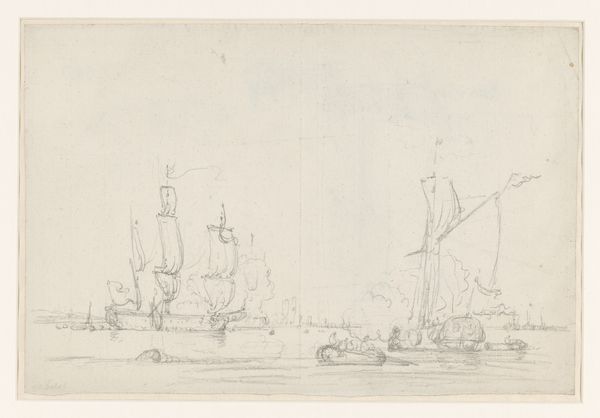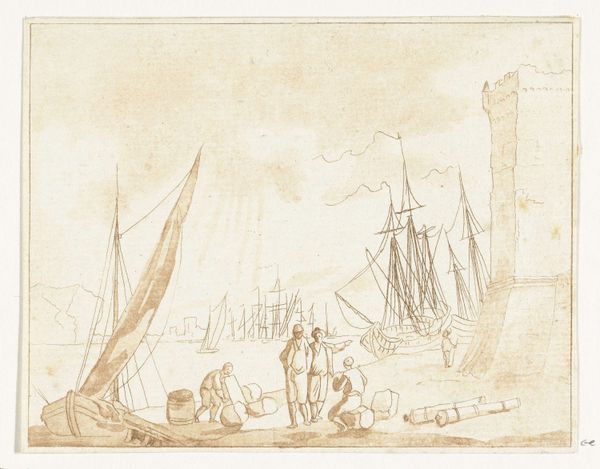
drawing, print, etching, ink
#
drawing
# print
#
pen sketch
#
etching
#
landscape
#
etching
#
ink
#
realism
Dimensions: height 80 mm, width 115 mm
Copyright: Rijks Museum: Open Domain
Editor: This etching, "Vissers in een roeiboot op open water" by Egidius Linnig, created in 1837, is quite delicate. I’m struck by its depiction of labor; there's a quiet dignity in these fishermen going about their work. What stands out to you? Curator: I'm immediately drawn to how Linnig situates these working-class figures within a rapidly changing economic landscape. Consider the period – 1837. We're on the cusp of massive industrialization. Doesn't this image subtly foreground the precariousness of their traditional way of life in the face of those changes? Are they romanticized or presented as a record? Editor: That’s a fascinating point. The windmills in the background do seem to hint at that shift. But how can we avoid romanticizing their hard labor when looking at art from a different historical moment? Curator: That's the crucial question, isn’t it? To move beyond mere aesthetics, we must consider whose stories are being told and how. Does the artist fully grapple with the fishermen's struggles, or is their labor aestheticized? Is this intended for an upper-class audience unfamiliar with maritime struggles? Editor: So, by examining the broader social and economic context, we can get a deeper sense of Linnig's motivations, and perhaps our own biases, when we interpret this image? Curator: Precisely! Art isn't created in a vacuum. By investigating the relationship between the artist, their subjects, and the prevailing power structures, we gain a far richer understanding of both the artwork and our place in relation to it. Editor: That's a really compelling way to look at art. I'll definitely keep that in mind going forward. Curator: Indeed, I’m glad we could learn from each other!
Comments
No comments
Be the first to comment and join the conversation on the ultimate creative platform.
